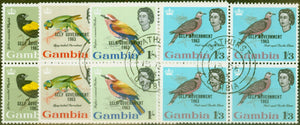The Gambia gained independence from the British Empire In 1965. Since then, tourism has gradually risen and the Gambia has become one of the most popular West African destinations - for good reason. Obvious attractions, like 50 miles of golden beaches and swaying palms, are just the beginning.
You can tour like a tourist, and visit some of the country’s most popular landmarks and historical areas. The commemorative Arch 22 is located on the road to Banjul and offers great views of Banjul from its high balcony. Fort James Island, a.k.a. Kunta Kinteh Island, sits within the Gambia River and is home to the ruins which once belonged to colonial Britain during the Slave Trade. This Island was the last piece of African soil seen by slaves before being transported to the Americas. Oozing with wildlife, the Gambia’s nature reserves, mangroves and forests are not to be missed with over 576 species of birds, crocodiles and monkeys.
The Gambia is the smallest country on the African continent. The majority of locals live solely off the land and sea and local fishermen often welcome travellers' involvement in fishing for dinner. The rural area of Ndemban is home to villages in which you can find local elders willing to include you in dancing, singing and cookery classes, as well as the traditional batik tie-dying craft. The Gambia is vibrant with markets, festivals and celebrations and you may want to enjoy a safari in Senegal, the country which shares its border.
And the icing on the cake ... The Gambia is just a short flight from the UK, there is no time difference, the country is safe to travel around and generally affordable.
“The greatest treasures, though, are the warm-hearted Gambian people, who more than live up to their homeland's moniker of ‘The smiling coast of Africa’.
Interested in the benefits of moringa - read more about it here.


